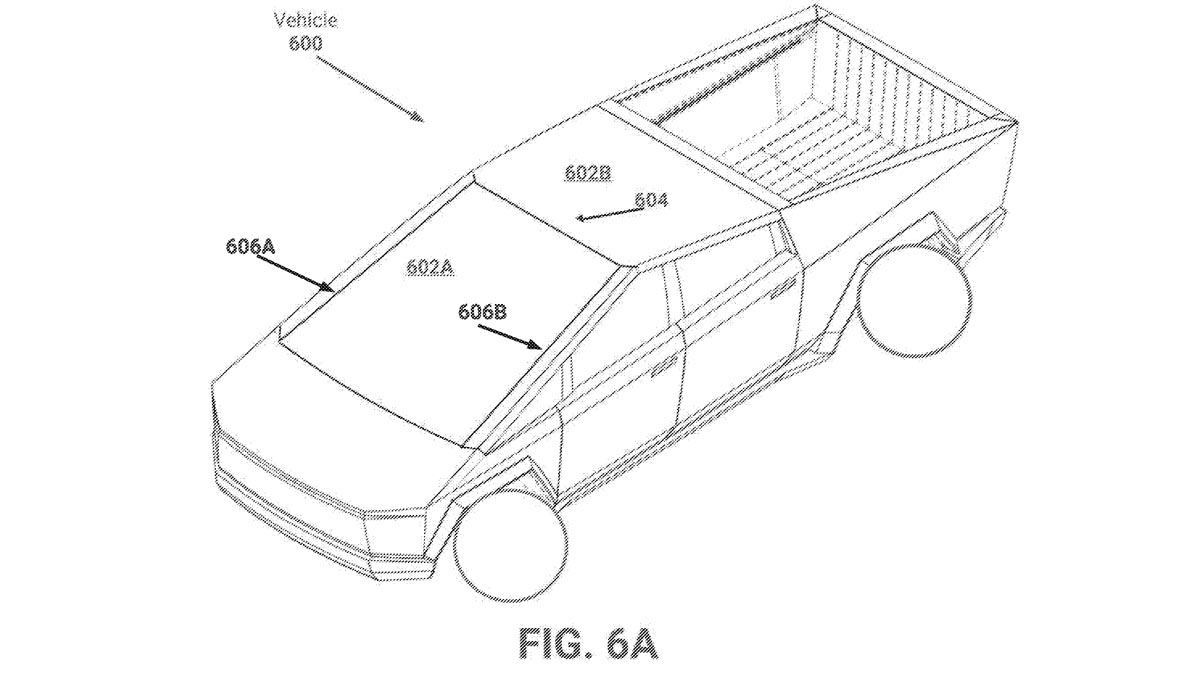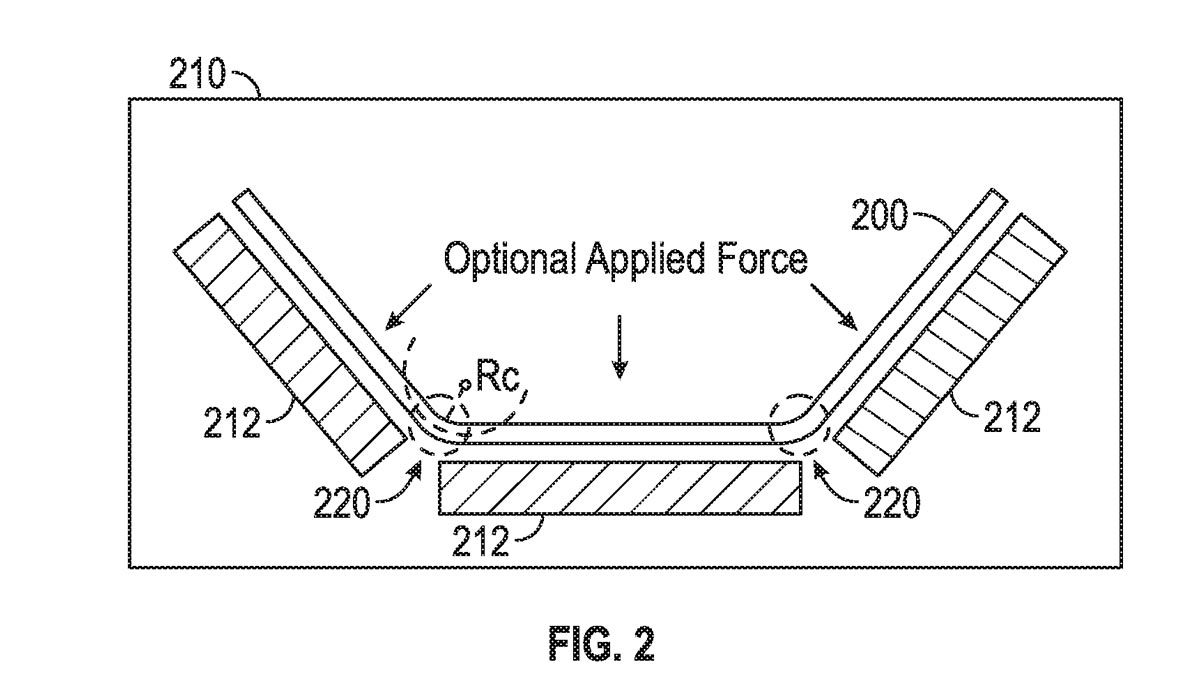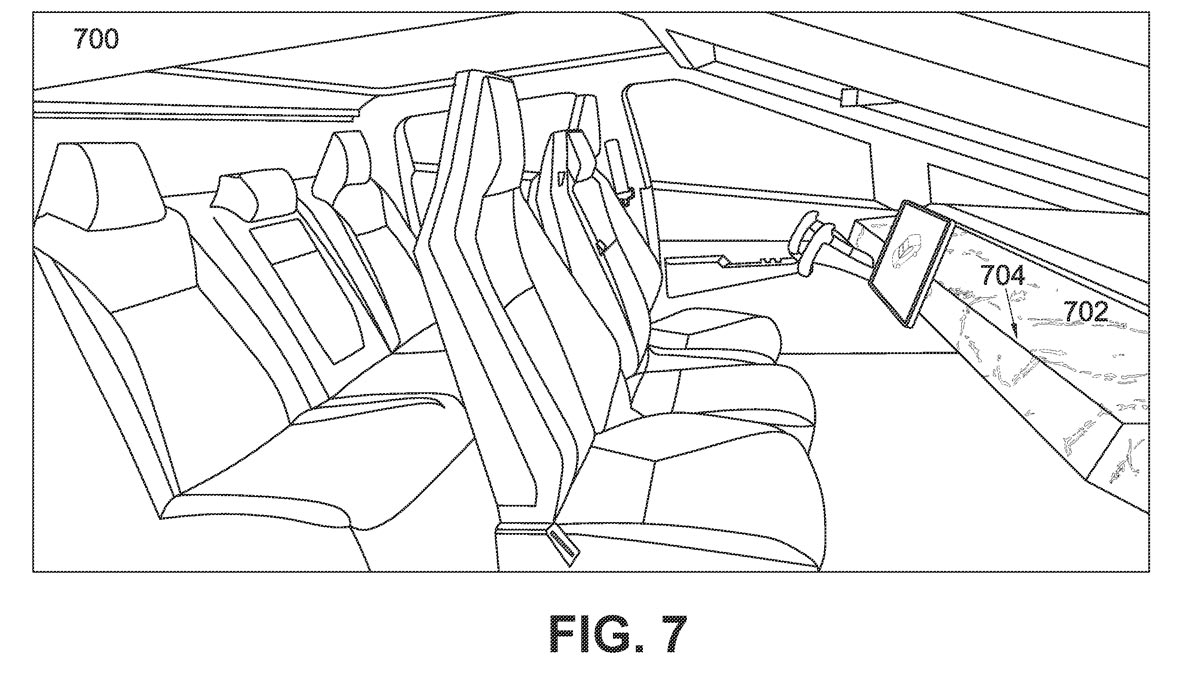Tesla’s upcoming Cybertruck electric utility was always meant to push the edge of automotive design, but a new patent and third-party camper add-on take the concept of a high-tech apocalypse-ready super truck to new heights.
For a start, the Cybertruck could have a dashboard consisting entirely of a glass-covered touchscreen, as well as bent glass windows, a new patent published that is assigned to the EV maker shows.
And, as third-party companies come up with their own ways to augment the Cybertruck, one in particular appears to have captured the imagination, and wallets, of eagerly awaiting Cybertruck owners.
First unveiled in 2019 by Tesla with armoured glass and an extremely tough steel exoskeleton, it’s no secret that the original Cybertruck prototype would ultimately have design tweaks applied to it before going into production.
If and when the Tesla Cybertruck electric utility – for which Tesla has taken at least 22,000 refundable pre-orders in Australia according to this crowd-sourced reservation tracker – makes it to local shores is unknown, but we hope it makes it here sooner than later to shake up the local auto market where utes are flavour of the decade.
While first US deliveries of the Cybertruck have now been delayed from late 2021 to 2022, at the company’s earnings call in July chief engineer Lars Moray confirmed that basic engineering for the electric utility (known as a Ute in Australia) had been finalised.
Now, a newly published patent suggests that some of this could include specially designed glass that allows Tesla to apply force to create a windscreen with uniquely bent edges.

The patent, which is available to view on Patentscope, is accompanied by a number of images showing how the bent windscreen could be made of either a single layer of multiple layers, with “feature lines”, or facets, on the side of the screen.
“As an example, the first glass structure 602A may represent a windshield positioned on the vehicle and formed according to the techniques described herein. In some embodiments, the first glass structure 602A may be multi-layer. Optionally, the first glass structure 602A may be single layer and formed as described herein with respect to Figure 2. Thus, the first glass structure 602 A may have feature lines (e.g., facets) 606A-606B,” the patent says.

The facets would be created by using a combination of localized heating either using lasers or resistive heaters and downward force, the patent says.
It then goes on to describe a glass dashboard, and – the part we think the most intriguing – the possibility of “a touch-sensitive electronic display” that could be formed using the methods described above.
“While not illustrated, it may be appreciated that the vehicle 600 may include an interior glass structure. For example, the vehicle 600 may include a glass dash positioned in the front of the vehicle 600 which is formed as described herein. In this example, the glass may optionally be a single layer glass with a film (e.g., polymer film) on top. As another example, a display (e.g., a touch-sensitive electronic display) may be formed from glass as described herein.”

The new patent now adds to the potential integrated solar panel option that was suggested in another recent patent as reported by The Driven in May. In that patent, Tesla has suggested it could involve a tonneau cover consisting of 110 solar cells connected to a charging system and the vehicle’s battery.
Combined with this $A68,000 camper add-on from CyberLandr – which according to the start-up’s website has already garnered $A18 million worth of orders – and we’d say that the Cybertruck could be just the thing for “ruining the weekend” as the saying adopted by many EV owners (taking a jibe at EV naysayers such as the current Coalition government) goes.
The Cyberlandr, which is an extendable module that has its own 500 watts worth of solar panels on the roof, consists of a kitchen, pivoting table and seats which lift up to create bedding for four, as well as a bathroom and dry flush toilet.
On the roof is – naturally – a Starlink satellite dish connected to a WiFi system and 32-inch television.
Sounds like the weekend is sorted.

Bridie Schmidt is associate editor for The Driven, sister site of Renew Economy. She has been writing about electric vehicles since 2018, and has a keen interest in the role that zero-emissions transport has to play in sustainability. She has participated in podcasts such as Download This Show with Marc Fennell and Shirtloads of Science with Karl Kruszelnicki and is co-organiser of the Northern Rivers Electric Vehicle Forum. Bridie also owns a Tesla Model Y and has it available for hire on evee.com.au.

